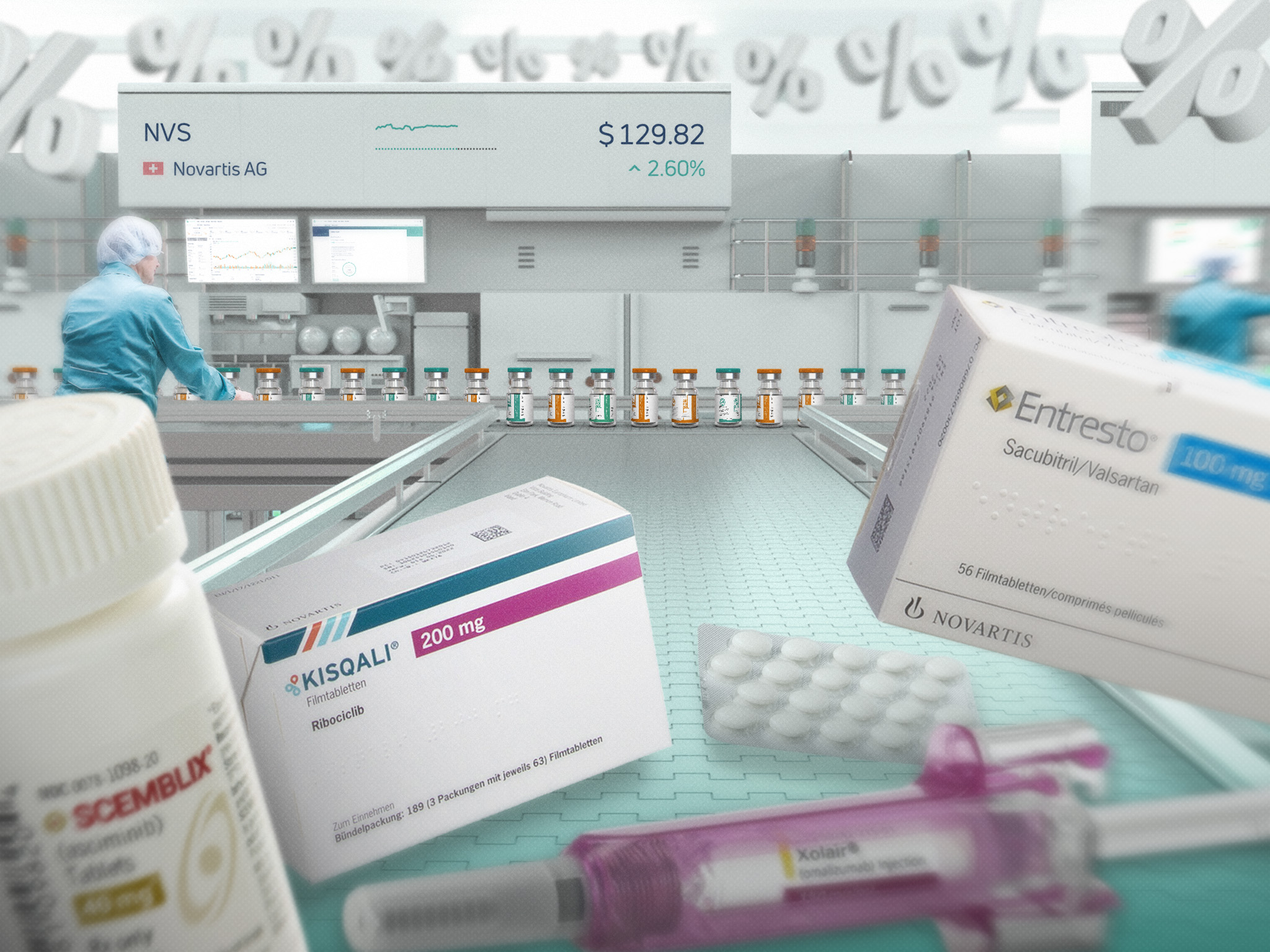Novartis (NYSE: NVS) is setting the stage to outperform its rival pharmaceutical companies in the future.
The company has developed a long pipeline of drugs to treat various diseases, following its recent acquisition spree in preparation for the expiration of patents on some treatments.
The Swiss company that manufactures drugs that treat cancer, heart issues, migraines, and immunology and other diseases has eight drugs that are available to patients and will generate growth for many years, said Novartis Chief Executive Vas Narasimhan to the media, according to the Wall Street Journal. The company also plans to commercialize eight more drugs that would also produce billions of dollars in sales each over the medium term.
“We are very confident in the U.S. outlook,” he said.
The pharmaceutical company has a portfolio of drugs that could produce a large percentage of its sales within the next year, giving the company a boost to its profit margin.
The pharmaceutical giant, which now boasts a $270 billion market cap, has eight drugs that are estimated to produce $3 billion to $10 billion in revenue annually.
Investors have expressed optimism for the future of the company, sending shares up 23% in the past year.
Mergers and acquisitions add to profit margin
The company’s recent deals are also likely to generate sales that will add to its profit margin. Novartis estimates its core operating profit margins will reach above 40% by 2029. For the first nine months of the year, its margin was 41.2%.
Novartis recently purchased Avidity Biosciences, a $12 billion deal, for its gene-based experimental drugs to treat neuromuscular diseases. The acquisition is estimated to add 1% in sales growth to a total of 6% from 5% for the 2024-2029 period, the company said.
The pharmaceutical company’s other recent acquisitions and licensing agreements that are smaller during the past two years will also help the company continue to grow its revenue past 2030.
“Over the past two years, we have executed more than 30 strategic deals, bolstering our pipeline and strengthening the outlook of the business in the mid-2030s and beyond,” Narasimhan said.
Novartis also increased its estimates for two drugs that produce the most revenue. Scemblix, which treats leukemia, boosted the sales estimate to $4 billion from $3 billion, while Kisqali is a drug for breast cancer, and sales are estimated to produce $10 billion at their peak, an increase from $8 billion.
North Carolina will also soon be home to some of its new manufacturing plants. Novartis has said it plans to bulk up its operations in the U.S., investing $23l billion in the next five years. The company had already said in the past that it planned to spend more money in the U.S. to build out its manufacturing operations and invest in research and development operations. Producing drugs in the U.S. will help the company avoid paying any potential new tariffs that would be enacted by the current administration.
The company does face some risks, mainly patent expirations of some of its drugs within the next decade, wrote J.P. Morgan analysts in a research note. Future revenue streams also depend on these drugs producing the millions in revenue that have been estimated.
“With strong positions in multiple key therapeutic areas, Novartis is well positioned for steady long-term cash flows,” wrote Jay Lee, a senior equity analyst of healthcare for Morningstar. “Strong intellectual property supporting multibillion-dollar products, combined with an abundance of late-stage pipeline products, creates a wide economic moat. While patent losses on multiple sclerosis drug Gilenya and cancer drug Afinitor will weigh on near-term growth, a strong portfolio of drugs along with a robust pipeline should ensure a steady long-term outlook.
But Novartis has a blockbuster lineup of drugs across a wide spectrum of diseases, providing necessary treatments for millions of Americans from more minor ailments to serious diseases such as cancer, while generating steady cash flow from its newer and existing drugs.




Comments